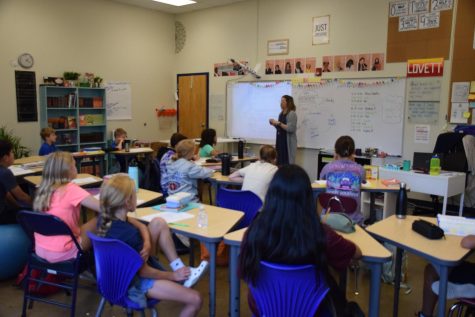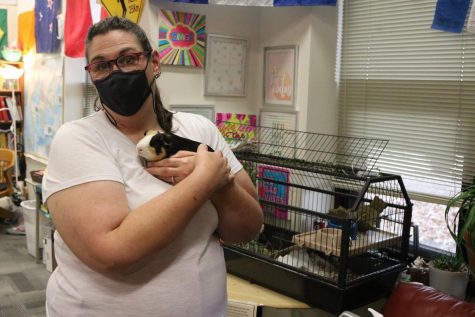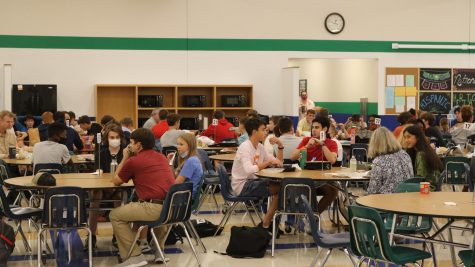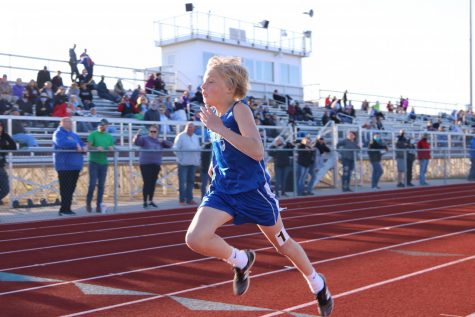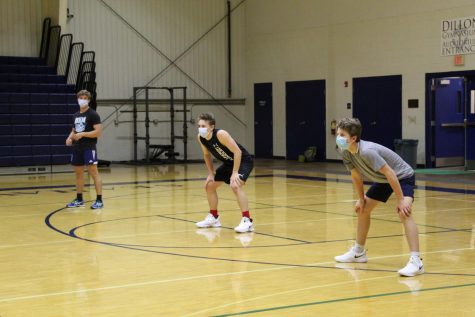Bishop E-Bury
Seabury adjust to online learning
Distance Learning begins at Seabury through zoom. Many students are enjoying the flexibility of online classes
April 8, 2020
In December 2019, COVID-19 entered mainstream media as a recent outbreak of a strain of a relatively obscure virus in faraway Wuhan, China. Most people thought that it would not go beyond a local epidemic, but it spread, and on March 11th, the World Health Organization declared it a pandemic. As of April 4th, it has spread to 205 countries, including the U.S. Significant action has been taken to try and stop the spread of this infection. Still, analysts have recently predicted that it will be several months before we go back to normal.
But in the meantime, school must continue. Ever since Headmaster Don Schawang got back from the international trip (see: Seabury’s Odyssey), he and the rest of the faculty have been putting together a plan for remote learning, which was launched last week. For many, remote learning has been a huge adjustment. You can no longer walk into a teacher’s office and ask a question, see your friends, or pet the orange cat that occasionally wanders onto campus. Everyone is now at home until the government lifts social distancing requirements and lets people out again. Reactions to this mess have varied, but students and faculty are adapting.
Take, for example, freshman Martin Hill. Hill is one of four siblings in the same house, all of whom attend Seabury. About remote learning, Hill says, “It definitely has its ups and downs. The downs include the inevitable technical difficulties that we have already faced ourselves with, but we should be able to . . . find our way around those. When it comes to the ups, however, I feel like it definitely balances out. I have been able to get a lot more sleep, as well as focus on learning at my own speed and take as much time as possible.
Hill has also dealt with the pros and cons of having siblings in the same Seabury distance learning program. “When it comes to having three other siblings,” says Hill, “I am both lucky and unlucky. Having two other brothers in the same grade definitely has its benefits, but more so now than ever. Whenever a time comes that I feel I don’t understand something or I need some help, they are always one call away. The only downside, I would say, is that four people all on the same network at once could cause problems, but we have yet to see those. As mentioned before, school now will definitely be easier both because it is self-paced and because the workload should be easier.”
Sophomore Riley Bird has a similar outlook on virtual learning: “It’s definitely different doing virtual school, and I find it a little awkward, but it’s chill. I can’t really tell if it’s easier or harder at this point, but I definitely like when I’m at school physically rather than virtual school.”
Education is not the only thing affected by Seabury’s closure: “It’s definitely hard not seeing my friends,” says Bird. “I’ll text, call, and FaceTime my friends . . . I’ll do whatever I can do to talk to them.” She certainly is not wasting the time not spent socializing or attending school: “I’ve been taking my dogs on longer walks, and I’ve been spending more time with my mom and all my siblings. I’ve also been spending time with my dad getting ready for turkey season. I’m pretty excited for that.”
Seventh grader Josie Kim, who also has a sibling at home, says, “Virtual school for me is very laid back and flexible, yet still challenging me to use my brain. I think our teachers and faculty have really set us up for success in terms of always having a schedule and not letting us slack off. Not only am I being challenged mentally, but also physically. Almost all of my teachers have told us to get outside and do something on a beautiful day.
Like Hill, Kim has had a similarly easy time navigating a multi-student household: “My brother, Jonah, works upstairs in his bedroom, and I work downstairs in the sunroom, so we don’t run into each other too often. Sometimes I can hear his Zoom meetings from downstairs, but otherwise, it’s not very hectic. In addition, we both are part of the Student Senate which we talk about outside of meetings, which is very nice given we have such little time to discuss with the rest of the Senate members.
As for the virtual workload, Kim has not struggled. “I think school is easier,” she says, “because we can spend more time on longer assignments rather than having to use forty-two minutes toward a class we have little to no homework in.” Difficulty accessing Schoology, however, has made some classes more difficult to navigate.
Senior AJ Mann is among the other members of the 2020 class whose senior year activities have been cut short because of the pandemic. On virtual learning, he says, “[it] basically means that I get to take a lot of naps between work. School is both easier and harder at the same time. On the one hand, more open time gives me a chance to really do well on my homework, but not having a physical connection with everyone is destructive to my mental health. Communication with friends is mostly texting and classes, but now and again we’ll facetime. It’s really hard not seeing people on a daily basis because the connections I have through school are basically the only ones I have. While I’m at home, I’m sleeping a lot more, playing plenty of computer games, laying outside on my hammock and eating way too much.”
Faculty member Don Meier is one of the teachers who has had to reorganize their curriculum because of this crisis. “Well, the commute is less for sure: just a few steps instead of driving over from western Olathe,” says Meier. “Seriously, it is different in that it is requiring a think-outside-the-box mindset regarding general assignments as well as labs and the safety in doing such things in an at-home context. I do think the challenge is one of approaching each day as a chance to improve things and recognizing that grace towards others is almost always reciprocated. A number of the activities associated with the time after Spring Break in both Physics and Physical Science involved being out of doors with classmates. The current situation restricts the ability to follow through with this approach, so again coming up with online methods to facilitate learning the same concepts but using things at home by oneself, and still try to make them memorable for students is the biggest challenge so far.”
Despite the strange circumstances, it seems that people are adjusting well. Distance learning is the new normal and will be until the end of the school year, at least. Hang on everyone!

